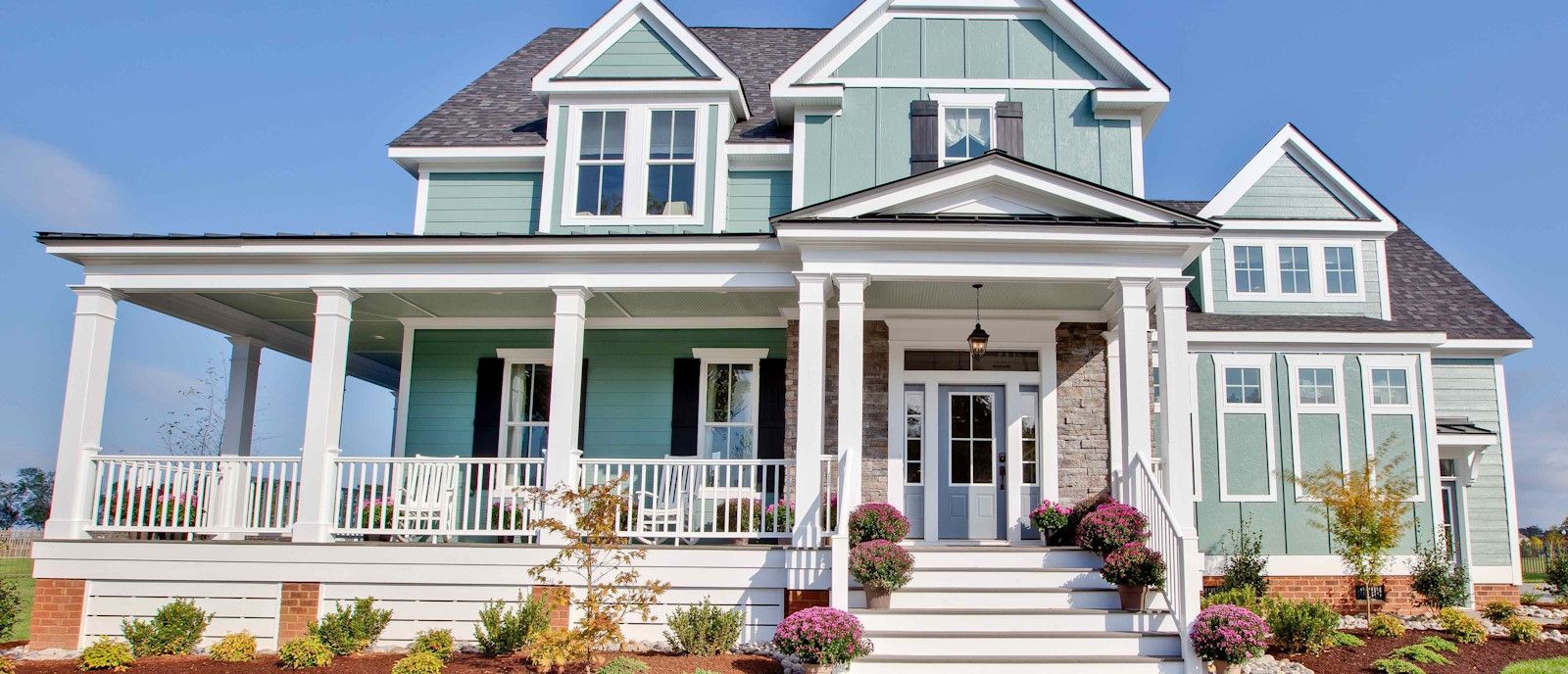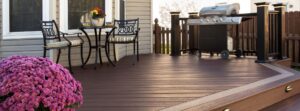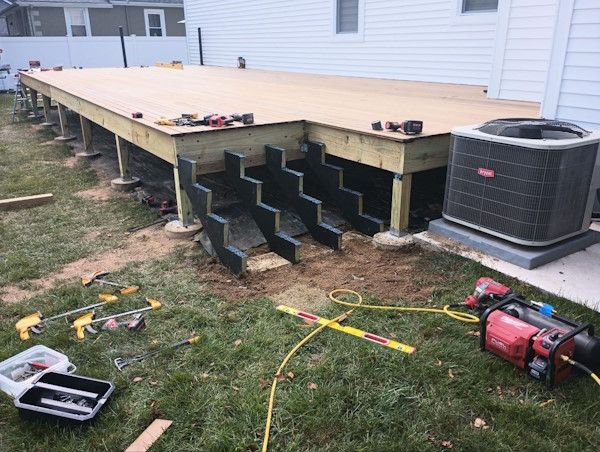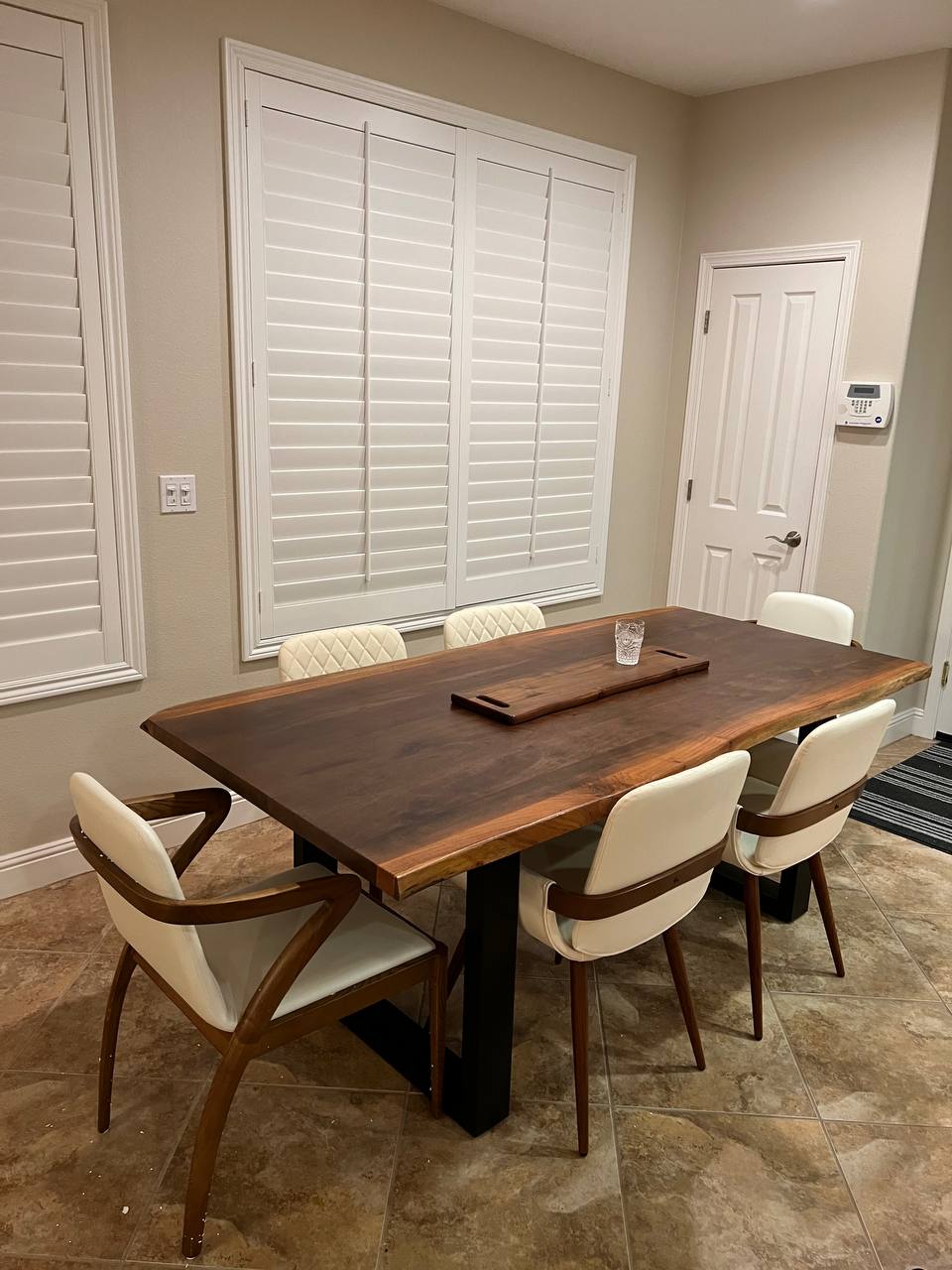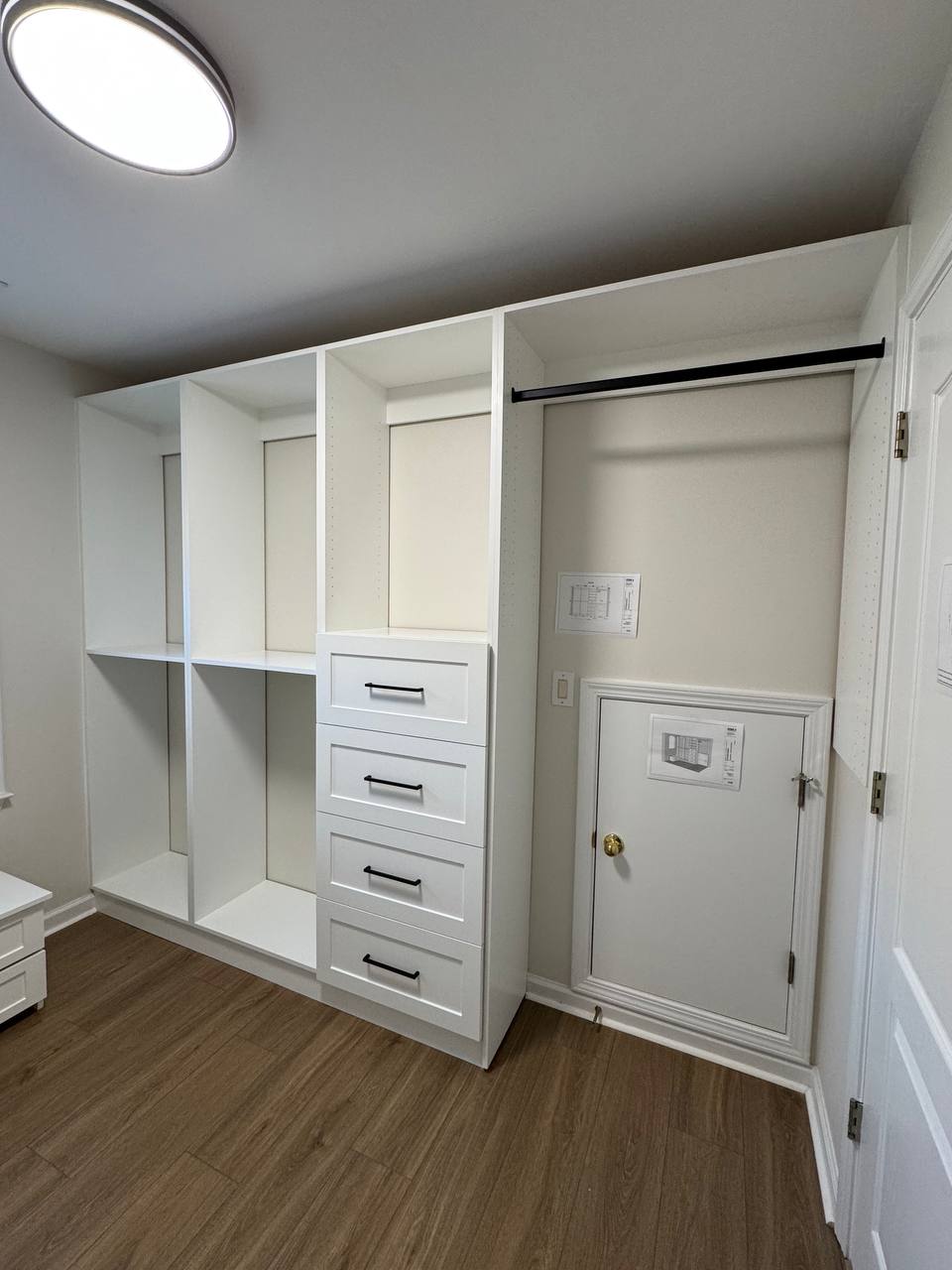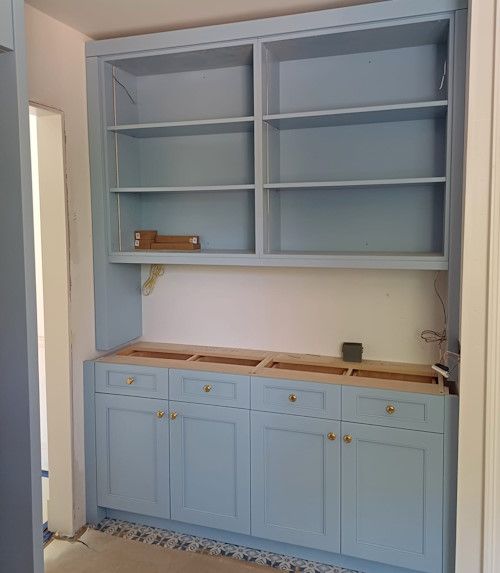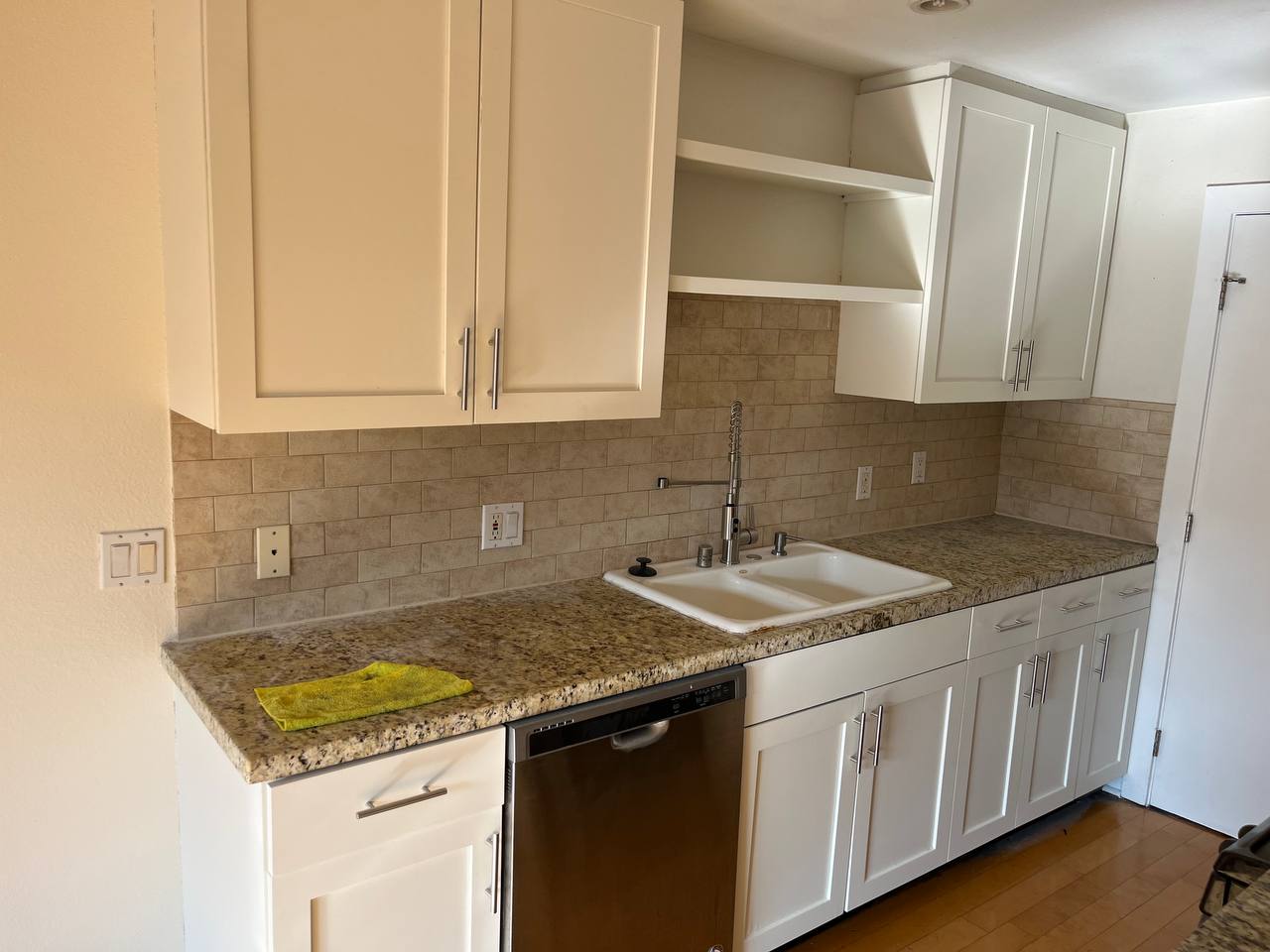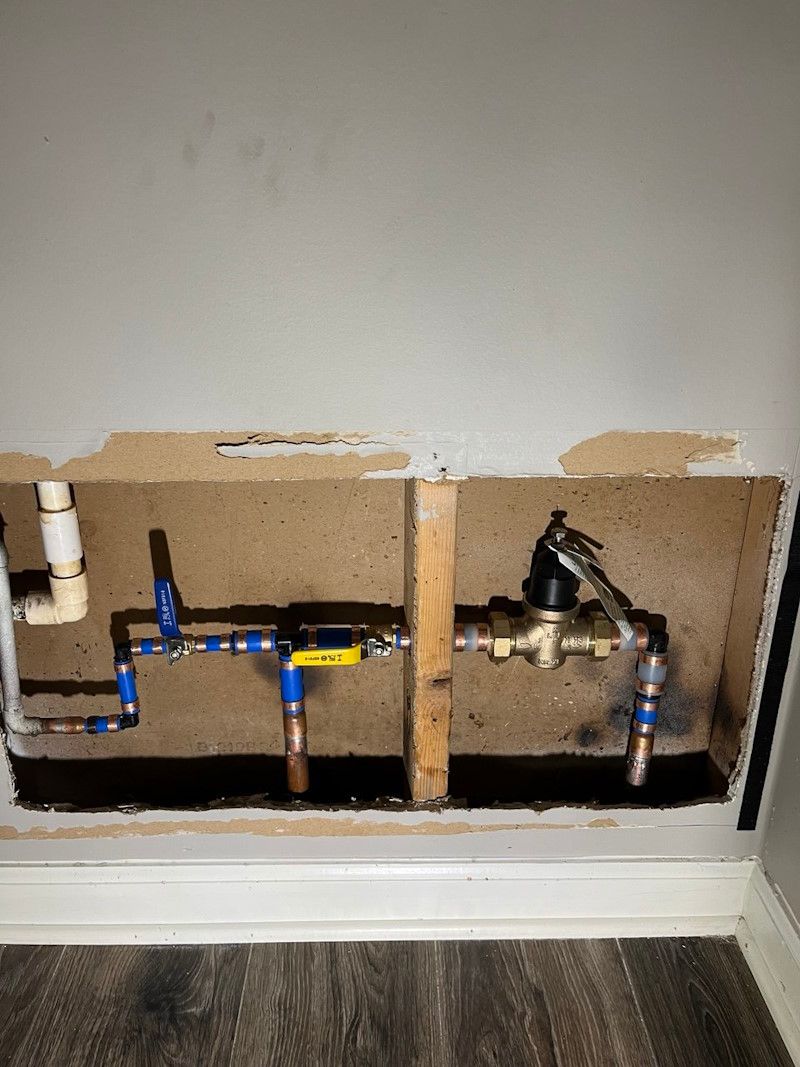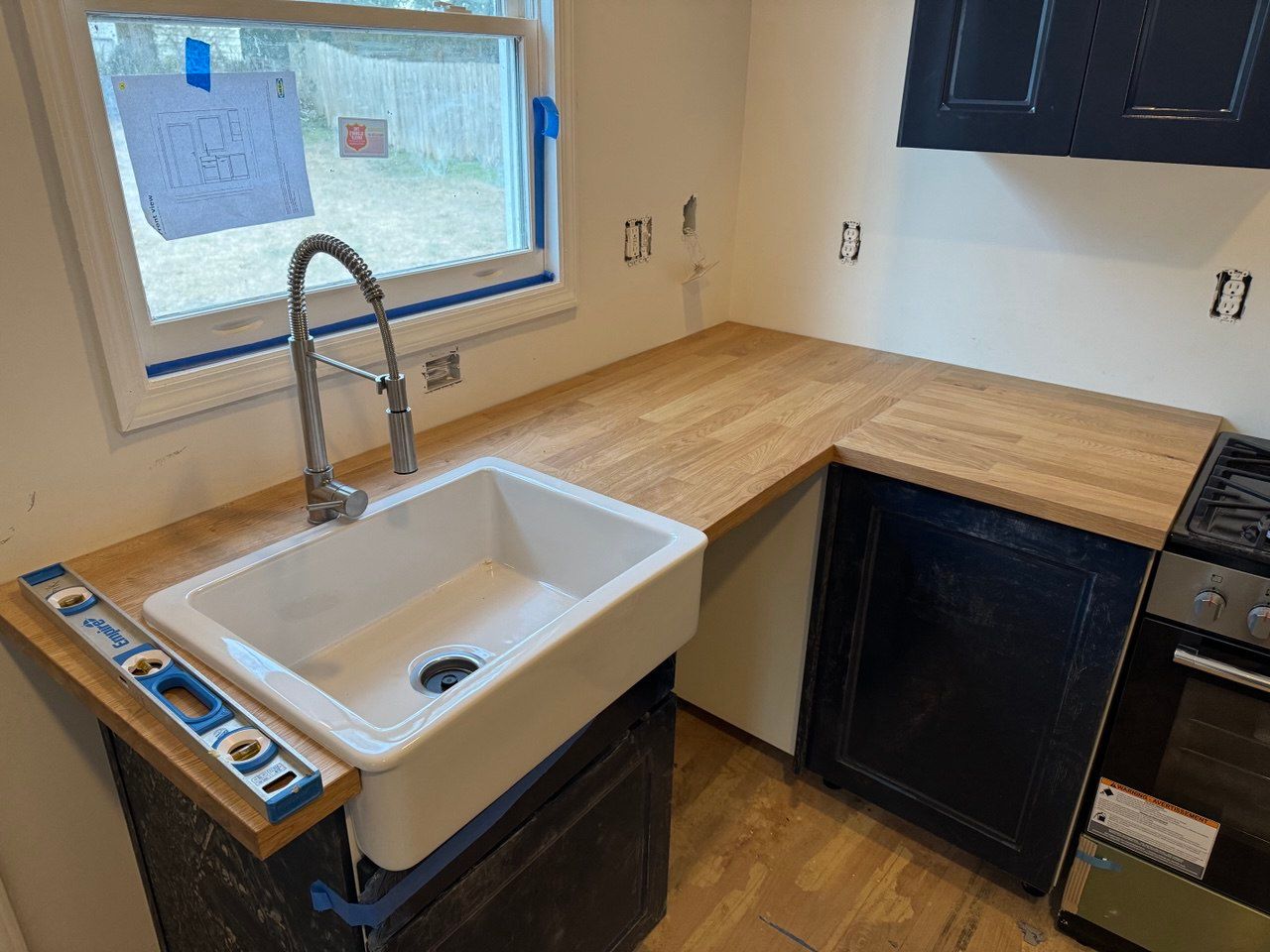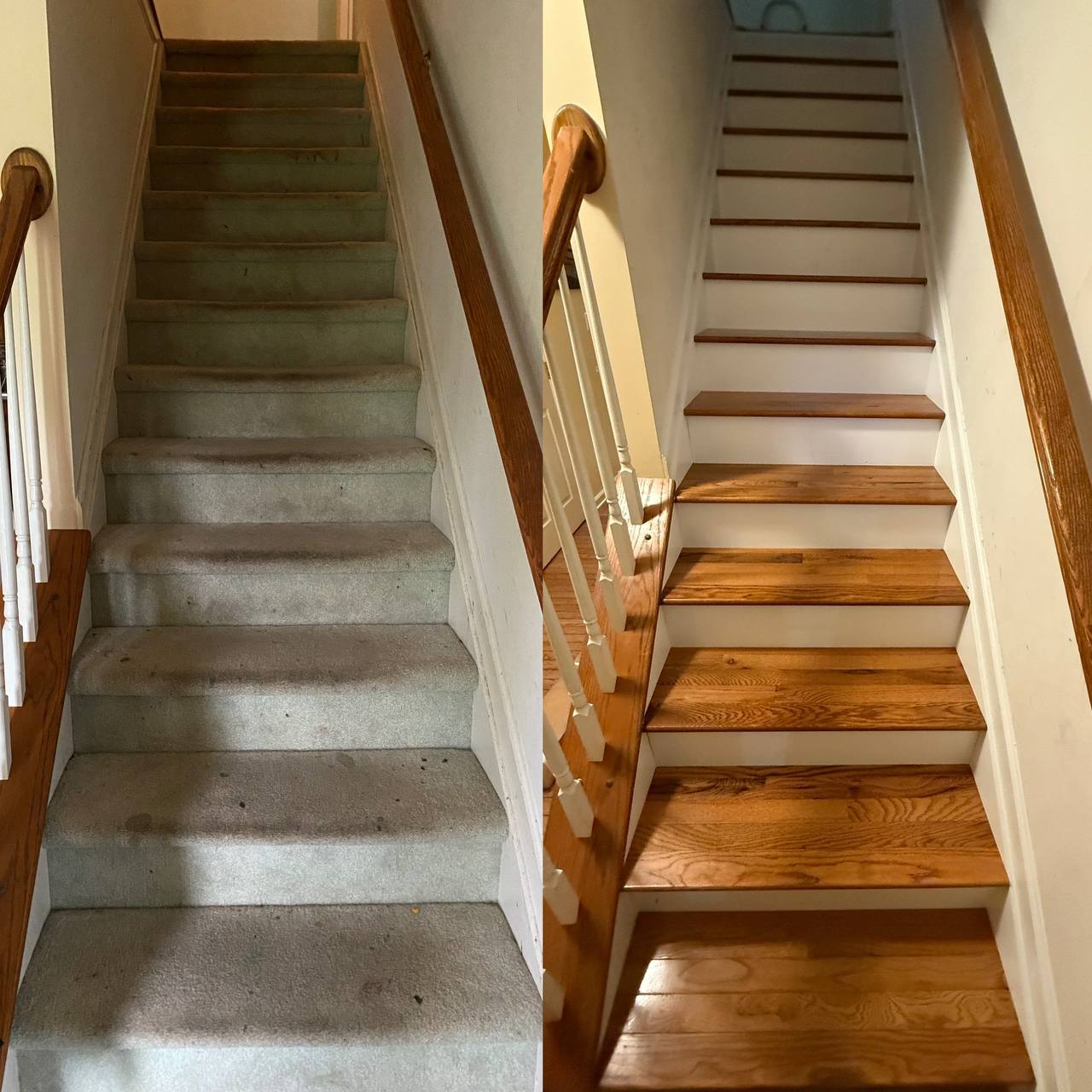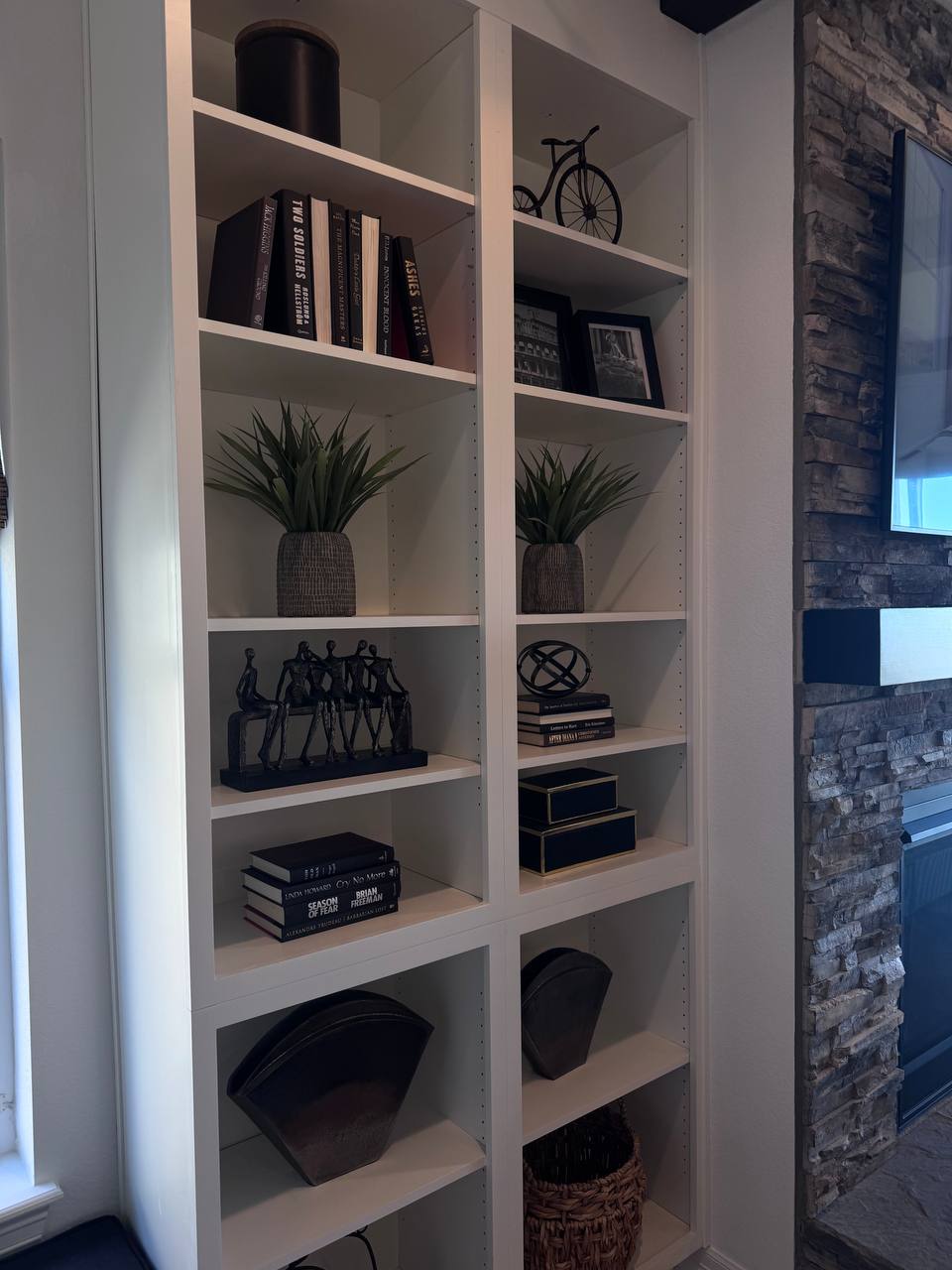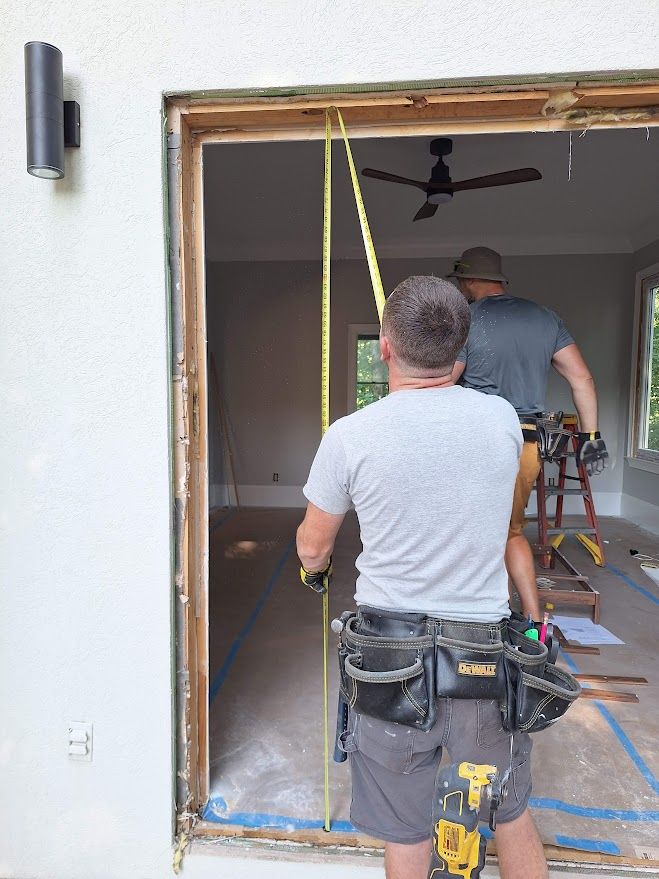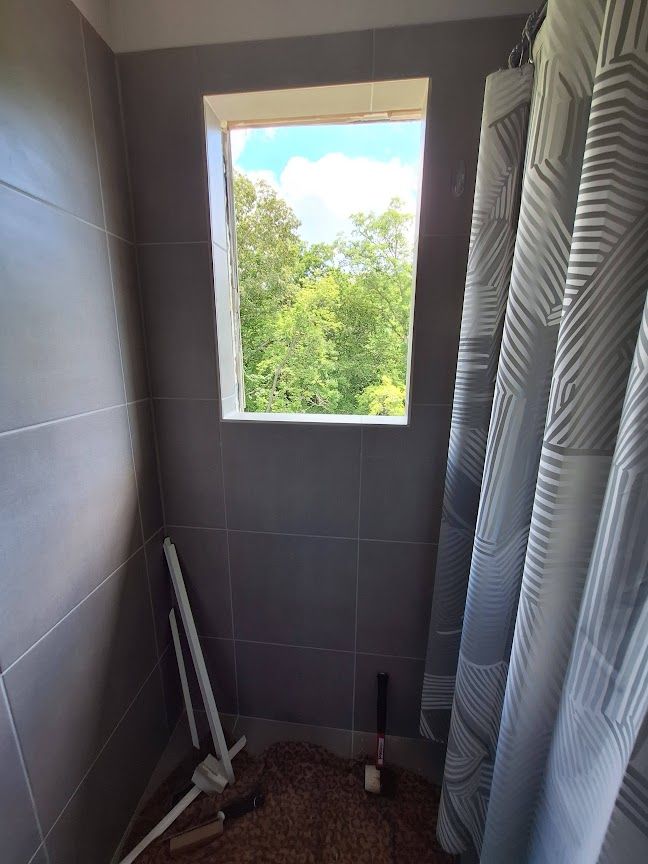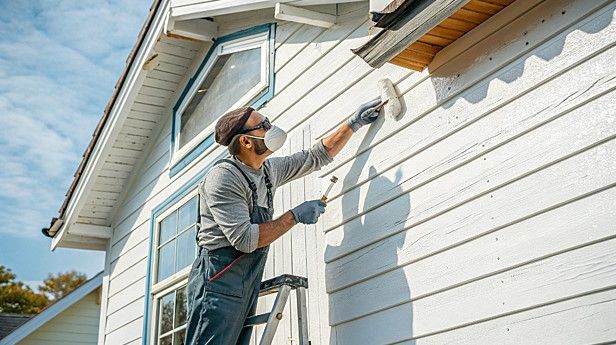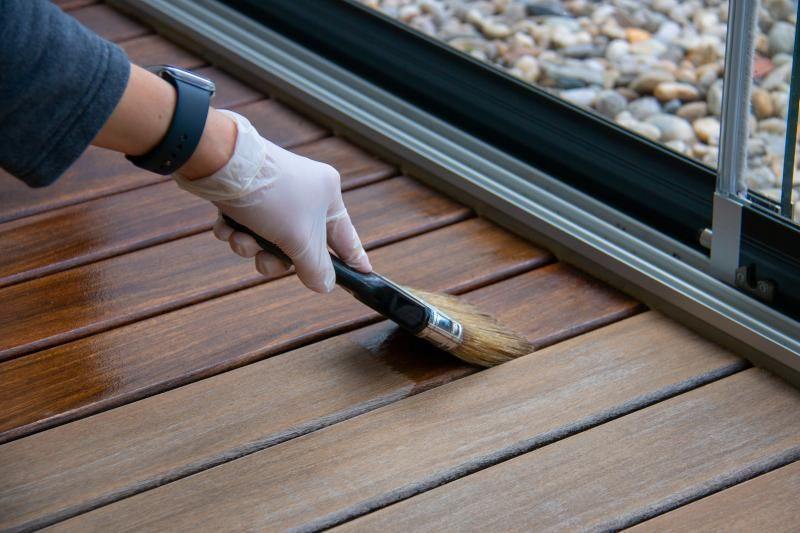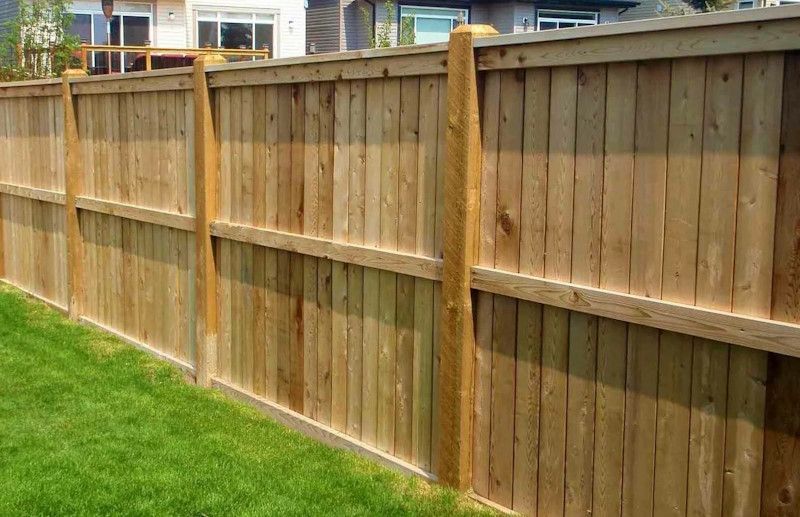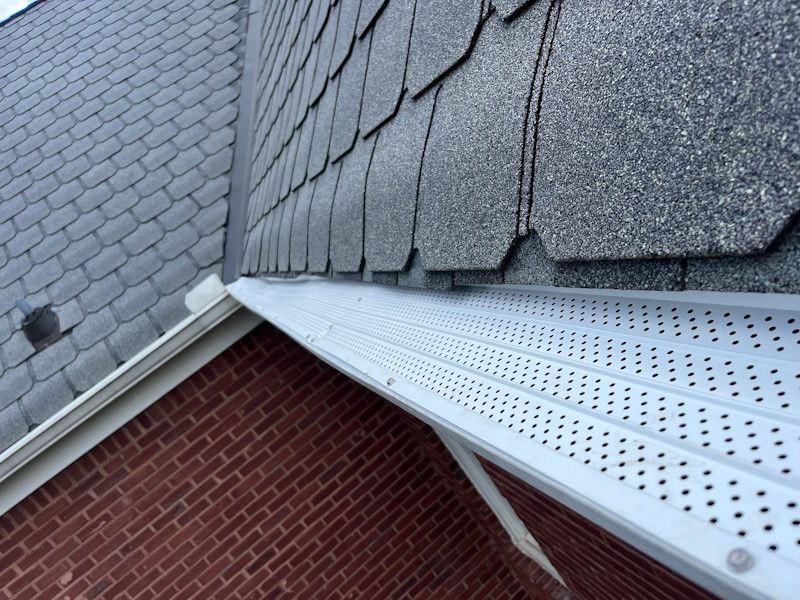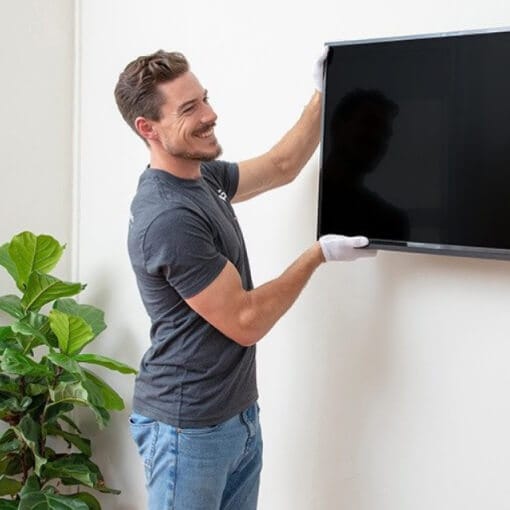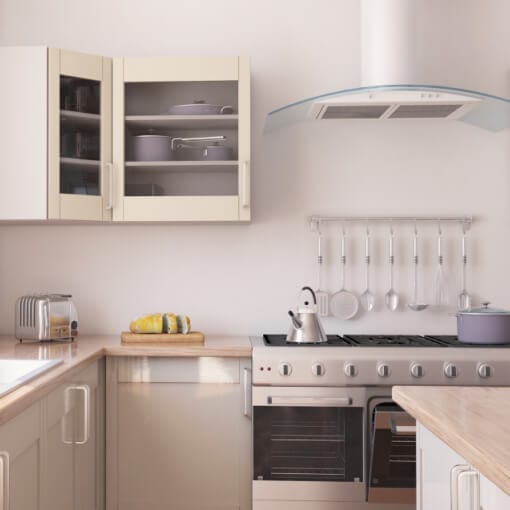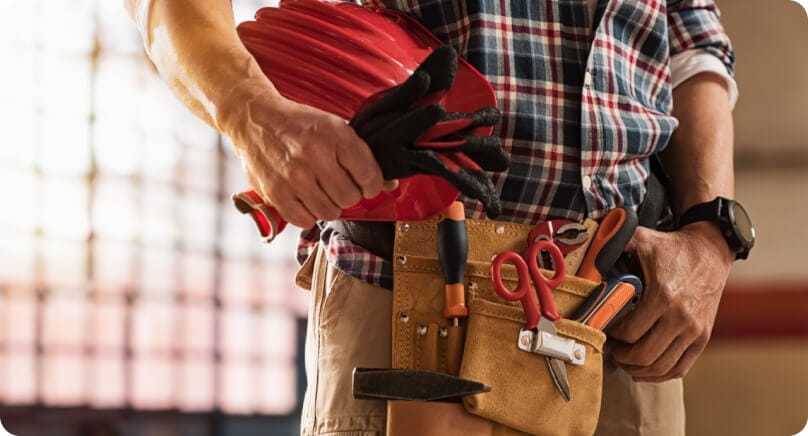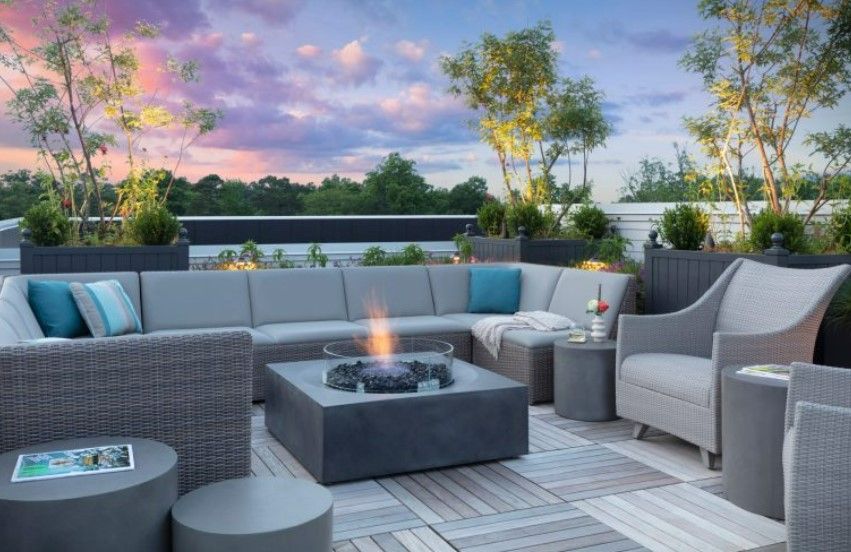Your home is more than just walls and a roof; it’s your castle, your sanctuary, and a reflection of your personality. While exterior painting might seem like a matter of aesthetics, it’s actually one of the most vital investments you can make in your home’s longevity, protection, and market value. It’s not just about a fresh coat of color—it’s about creating a powerful barrier against the elements, pests, and the relentless march of time.
In this comprehensive guide, we’ll break down every aspect of exterior painting, from the initial assessment to the final brushstrokes, ensuring your home shines and is securely protected for years to come.
Why Exterior House Painting Is a Necessity, Not Just a Cosmetic Update 🏡✨
Many homeowners see exterior painting as purely cosmetic. However, this is a misconception. Painting your home’s facade is a critical protective measure that prevents costly problems down the road. Think of paint as your home’s first line of defense against a harsh external environment.
Protection from Damaging Elements 🛡️💨
Your home is constantly exposed to the forces of nature. A high-quality paint acts as a shield, guarding the most vulnerable parts of its structure.
- Moisture and Mold: How water seeps into walls and causes rot. Rain, snow, and high humidity are the worst enemies of wood and other porous materials. Without adequate protection, moisture can penetrate cracks and pores, leading to wood rot, mold, and mildew. This not only damages the appearance but also threatens your home’s structural integrity and your family’s health.
- UV Radiation: How the sun fades paint and damages the facade. The sun’s rays, especially ultraviolet (UV) light, break down the molecular bonds in paint, causing it to fade, crack, and peel. This doesn’t just look bad—it strips the facade of its protective properties, leaving your home’s materials vulnerable.
- Insects and Pests: How a quality coating creates a barrier against termites. The wooden components of your home’s facade are particularly attractive to termites, wood-boring beetles, and other pests. A fresh layer of paint or primer creates a smooth, impenetrable surface that significantly hinders insects from getting inside, protecting your wooden structures from destruction.
Increased Value and Aesthetics 💰🏡
Beyond protection, exterior painting is hugely important for your home’s appeal and value.
- Increased Market Value: How a fresh facade affects your home’s price. Studies show that a freshly painted house can increase its market value by 5-10%. Potential buyers see a tidy facade as a sign of a well-cared-for home, which immediately makes it more appealing and makes them willing to pay more.
- Aesthetic Transformation: The importance of curb appeal. “Curb appeal” is the first impression your home makes on guests and passersby. A clean, fresh coat of paint instantly revitalizes the exterior, giving your home a neat and modern look, making it stand out from the rest and creating a sense of pride in your residence.
Here you can read the article: “5 Best Deck Colors That Increase Home Value”
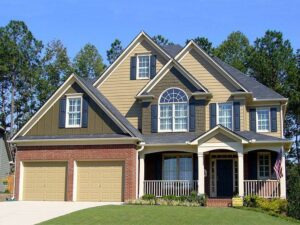
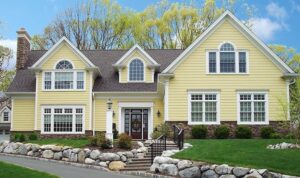
Getting Started: Planning and Project Preparation 📋🛠️
The success of any painting project begins long before you open the first can of paint. Thorough planning and preparation are 50% of the battle.
Choosing the Best Time of Year for Painting ☀️🌡️
Selecting the right time is critical for the durability and quality of the paint job.
The Impact of Weather:
Ideal temperature and humidity. The optimal conditions for exterior painting are dry weather with temperatures between 50°F and 90°F and humidity no higher than 70%. Avoid direct sunlight on the surface you’re painting, as well as strong winds, rain, and overnight freezes, which can lead to uneven drying, blistering, and poor paint adhesion.
Seasonal Specifics:
Pros and cons of each season.
- Spring: An ideal time after the snow melts. Temperatures are moderate, but there is a risk of sudden rain and cold nights. Surfaces may still be damp.
- Summer: Consistently warm, but it can get too hot, which speeds up paint drying and causes brush marks. Early mornings and evenings are often the best times.
- Fall: An excellent choice if there’s no risk of frost. The air is dry and temperatures are comfortable. However, daylight hours are shorter, and morning dew can be an issue.
Assessing Your Home’s Condition and Budgeting 🔍💲
An accurate assessment helps avoid unexpected costs and delays.
- DIY Assessment vs. Hiring a Pro: Pros and cons.
- DIY: Saves money but carries the risk of missing hidden problems. Suitable for homes in great condition.
- Pro: Provides an accurate assessment of all damage and a professional estimate for materials and labor. Recommended for older or badly damaged homes. The experts at Handyman Expert are always ready to provide a free assessment!
- Factors Influencing Cost: Material, area, and condition.
- Area: The larger the facade, the more paint and time it will take.
- Condition: The presence of cracks, peeling paint, or rot increases the amount of prep work and, consequently, the cost.
- Facade Material: Wood requires more preparation and priming than, for instance, siding.
- Architectural Complexity: Multiple corners, windows, and decorative elements increase the labor intensity.
Surface Preparation: The Most Important Step You Can’t Skip 💪🧼
This is not an exaggeration: 80% of a paint job’s success and durability depends on the quality of surface preparation. Skipping this step guarantees premature peeling and defects.
Removing Old Paint and Contaminants 🧹🧽
A clean, sound surface is the foundation for perfect new paint adhesion.
- Mechanical Methods: Scrapers, brushes, sanders. Use wire brushes to remove loose, flaking paint. Scrapers are effective for larger pieces. Sanders (belt or orbital) are ideal for smoothing the surface and removing old layers, creating optimal adhesion.
- Chemical Strippers: When and how to use them. For stubborn paint, epoxy coatings, or old layers that are difficult to remove mechanically, you can use chemical strippers. Always follow the manufacturer’s instructions, work in a well-ventilated area, and use personal protective equipment (PPE) like a respirator and gloves. Be sure to neutralize or rinse off the chemical afterward.
- Power Washing: Pros and precautions. This is the most effective way to remove dirt, dust, mold, and loose paint. Power washing quickly cleans large areas. Precautions: Use the correct pressure (too high can damage the facade), keep the nozzle at a safe distance, and work from top to bottom. Allow the surface to dry completely (at least 24-48 hours) before proceeding.
Repairing the Facade 🔨🔧
Any defects must be fixed before painting.
- Sealing Cracks: Using caulk and putty. Small cracks and gaps should be filled with acrylic or latex caulk, which remains flexible and prevents moisture penetration. Larger damage or uneven areas should be smoothed with exterior-grade putty. Let it dry and then sand it.
- Replacing Damaged Elements: Boards, siding. Rotten, cracked, or damaged boards, siding, or trim must be completely removed and replaced. Painting over rot is useless and will lead to rapid decay.
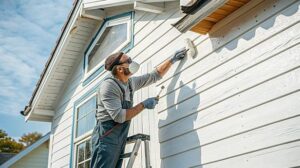

Choosing the Ideal Exterior Paint 🎨🌈
The world of paint is vast, and the right choice is key to your facade’s longevity and beauty.
Types of Paint by Composition 🧪💧
- Latex (Water-Based): Pros and cons. The most popular choice for exterior work.
- Pros: Dries quickly (allowing for a second coat on the same day), cleans up easily with soap and water, and is highly flexible, allowing it to withstand minor house movements without cracking. It also has a low odor.
- Cons: May be less resistant to abrasion and some chemical exposure compared to oil-based paints. Not always suitable for surfaces with deeply ingrained stains.
- Oil-Based (Alkyd): Pros and cons. Previously the industry standard, now less common than latex.
- Pros: Exceptional durability, excellent adhesion to old oil-based coatings, and high resistance to moisture and mildew. Creates a very hard, tough finish.
- Cons: Dries slowly (may require a day between coats), has a strong odor, requires solvents for cleanup, and can yellow over time.
Factors Influencing Paint Choice 🤔🌍
- Climate: Resistance to extreme temperatures. In regions with harsh winters or hot summers, choose paint with enhanced frost resistance, UV protection, and the ability to withstand temperature fluctuations. Manufacturers list the ideal temperature range for their products.
- Facade Material: Wood, brick, siding, stucco.
- Wood: Requires flexible latex paints that can “move” with the wood.
- Brick/Stucco: Porous surfaces need paints with good permeability (to “breathe”), which are typically latex paints.
- Siding: Vinyl siding requires paint specifically designed for vinyl to prevent warping from heat.
- Desired Finish: Flat, satin, semi-gloss.
- Flat: Hides minor imperfections, looks elegant, but can be harder to clean.
- Satin/Eggshell: A good compromise between flat and semi-gloss, more durable and easier to clean than flat, with a slight sheen.
- Semi-Gloss/Gloss: Very durable and easy to clean but highlights all surface imperfections. Often used for doors and trim.


Primer: Why It’s a Must-Have 🧪🧱
Primer isn’t an attempt to sell you an extra can; it’s a fundamentally important layer that ensures the durability and quality of the final finish.
Functions of Primer 🎯✨
- Improved Adhesion: Ensuring better paint grip. Primer creates an adhesive layer that “glues” the paint to the surface. Without it, the paint may not stick well and will quickly peel.
- Sealing Pores: Reducing paint consumption. Porous materials like wood or stucco will “soak up” paint like a sponge. Primer seals the pores, creating a uniform surface, which saves you money on the number of final paint coats needed.
- Mold Protection: An additional barrier. Many primers contain fungicidal additives that prevent the growth of mold and mildew under the paint, especially in high-humidity conditions.
- Stain Blocking: Masking old stains. Some primers (stain blockers) can cover and block tannins from wood and hide old water, rust, or smoke stains, preventing them from bleeding through the final coat.
Tools and Equipment: What You Need for a Perfect Finish 🎨🔧
The right tools make the job efficient and the result outstanding.
Main Tools for Paint Application 🖌️💨
- Rollers and Brushes: Choosing the right size and type of nap.
- Rollers: Ideal for large, flat surfaces. Choose a long-nap roller for rough surfaces (brick, stucco) and a short-nap roller for smooth ones (siding, smooth wood). The roller’s width depends on the area.
- Brushes: Indispensable for corners, edges, hard-to-reach spots, and around windows and doors. Natural bristles are for oil-based paints, while synthetic ones are for latex.
- Paint Sprayer: When to use it and its advantages (speed, uniformity).
- Pros: Provides incredible speed and a perfectly uniform finish without brush marks or drips. Ideal for large jobs and complex facades with many details.
- Cons: Requires a certain skill level and thorough masking of everything around the work area (windows, doors, plants), as paint is atomized. Good ventilation and PPE are a must.
Ancillary Equipment 🪜🧤
- Ladders and Scaffolding: Safety rules. Use stable ladders of the appropriate height. For larger homes or complex facades, renting scaffolding is significantly safer and more convenient. Always follow safety rules when working at heights: don’t overreach and don’t place ladders on uneven ground.
- Protective Sheeting and Painter’s Tape: How to protect windows, doors, and landscaping. Before starting, carefully tape off all windows, doors, light fixtures, and other elements that shouldn’t be painted with high-quality painter’s tape. Lay down drop cloths or tarps on walkways, patios, bushes, and flowerbeds to protect them from paint drips.
- Personal Protective Equipment (PPE): A respirator, safety goggles, gloves, and work clothes are essential for your safety.
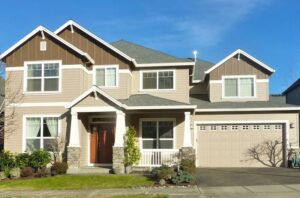
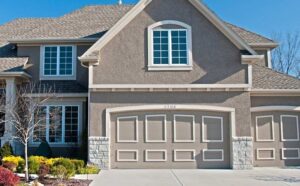
Step-by-Step Painting Process: Tips from Handyman Expert Pros 🪜🎨
Follow this plan to achieve a professional result.
- Step 1: Prepare the Area 🌿🧹
Move any furniture, grills, or plants you can. Cover everything you can’t move (windows, doors, landscaping) with painter’s plastic and tape. Ensure there is enough clear space around the house for ladders or scaffolding. - Step 2: Apply Primer 💧🖌️
Apply a uniform coat of primer to the entire prepared surface. Use a roller for large areas and a brush for corners and edges. Allow the primer to dry completely according to the manufacturer’s instructions (usually 2-4 hours). - Step 3: Apply the First Coat of Paint 🎨➡️
Begin painting from the top down to avoid drips on already painted areas. Work in sections, maintaining a “wet edge” to avoid visible lap marks. For rollers, use a “W” or “M” technique for even paint distribution. For brushes, use smooth, long strokes. - Step 4: Apply the Second Coat (If Necessary) 🎨✨
After the first coat is completely dry (drying time is on the can, usually 4-8 hours), check the color’s uniformity and richness. In most cases, a second coat is needed for full coverage, consistent color, and maximum durability. Repeat the application process, aiming for an even more uniform finish. - Step 5: Final Inspection and Cleanup 👀🧹
After all coats are fully dry, carefully inspect the facade for any missed spots, drips, or defects. Touch up as needed. Carefully remove the painter’s tape and protective sheeting while the paint is still a bit “soft” but not runny (to prevent the paint from peeling off with the tape). Clean all tools, washing brushes and rollers (with water for latex paints, solvent for oil-based). Throw away the trash and enjoy the results!
Common Exterior Painting Mistakes and How to Avoid Them ❌⚠️
Knowing potential mistakes will help you prevent them and save time, money, and stress.
- Improper Surface Preparation 🤦♀️👎
- Mistake: Painting over a dirty, dusty, damp, or peeling surface.
- How to Avoid: Never skip the cleaning, repair, and priming stages. Remember: 80% of success is in the preparation. This is the most important step, and while it takes time and effort, it pays off in the long run.
- Painting in Poor Weather Conditions ⛈️☀️
- Mistake: Painting in weather that is too hot, cold, humid, or windy, or in direct sunlight, or when rain is expected.
- How to Avoid: Strictly follow the temperature and humidity guidelines recommended by the paint manufacturer. Check the weather forecast and choose a stable period with no precipitation or extreme temperatures. If it’s too hot, start early in the morning or in the evening.
- Skimping on Materials 📉💰
- Mistake: Buying cheap paint, primer, or low-quality tools.
- How to Avoid: Exterior painting is a long-term investment. Use high-quality, exterior-grade paint, a good primer, and reliable tools. Cheap materials will quickly lose their look and require repainting in just a few years. This is “penny wise, pound foolish” in action.
- Ignoring Safety Precautions 🚧🚨
- Mistake: Working at heights without a harness, using faulty ladders, not wearing PPE, or handling chemicals without protection.
- How to Avoid: Safety comes first. Always use stable ladders or scaffolding and follow the rules for their setup and use. Wear a respirator, goggles, and gloves when working with paints, solvents, and when power washing.
How Much Does Professional Exterior House Painting Cost? 💲🏠
The price for professional house painting can vary significantly. It’s important to see this as an investment that will pay off with a durable finish and no need to redo the work for years.
Factors Influencing the Price 📊📏
- House Size and Complexity:
A one-story house versus a two-story. Obviously, the larger the surface area, the higher the cost will be. Homes with complex architecture (multiple eaves, turrets, dormers) require more time and effort than simple rectangular homes. - Facade Condition:
Need for repairs. If the facade needs significant preparation—removing multiple layers of old paint, filling a large number of cracks, replacing rotted boards—this will increase the total cost of the project. - Chosen Materials:
The cost of paint and primer. By choosing premium paints with enhanced features (fade resistance, mold protection), you’re investing in durability, but the final cost will be higher. - Labor Costs:
Market rates in different regions. These depend on the location (services in big cities are usually more expensive), the crew’s experience and qualifications, and the services included (e.g., post-project cleanup).
The average cost for professional exterior house painting in the US ranges from $2,500 to $12,000 and up, depending on all the factors mentioned above. Some projects may exceed $20,000. Always ask for a detailed estimate so you know exactly what you’re paying for.
Frequently Asked Questions (FAQ) ❓💡
How often should a house be repainted?

Can I paint over old paint?

How long does it take to paint a house?

What paint should I choose for a wood house?

What if it rains during painting?

Do I need to wash the house before painting?

Conclusion: Why Trust Handyman Expert for Your Exterior Painting 🏆✨
Exterior House Painting is a large and important project that requires not just an investment but also deep knowledge, experience, and the right tools. DIY painting may seem like a cost-effective solution, but it often leads to mistakes, additional expenses, and an unsatisfactory result that needs to be redone.
We offer the highest quality Exterior House Painting Services
By trusting your home to professionals, you’re investing in peace of mind, quality, and durability.
Our Advantages ⭐🤝
At Handyman Expert, we understand the value of your home and know how important it is to protect it and give it a flawless look.
By choosing us, you get:
- Experience and Professionalism: Certified Experts. Our craftsmen are a team of highly qualified, certified, and experienced professionals who know all the nuances of exterior painting. We use time-tested methods and follow industry best practices.
- Quality Guarantee: Confidence in the Result. We use only premium, proven materials and modern equipment. This, combined with our professionalism, allows us to offer a warranty on our work. Your home will look flawless and be reliably protected for many years.
- Time Savings: We Value Your Time. We complete projects efficiently and within a pre-agreed timeframe, minimizing disruption to your family. You won’t have to spend your weekends on prep and painting; instead, you can enjoy your newly transformed home.
- Safety: We strictly follow all safety standards and rules to ensure the painting process is safe for our employees, your family, and your property.
- Personalized Approach: We consider all your wishes and your home’s unique features, offering optimal solutions and color schemes that will perfectly fit your surrounding landscape and architectural style.
Don’t put off renewing and protecting your home. Contact Handyman Expert today for a free consultation and estimate. Let us turn your home into a work of art that will bring you and your loved ones joy for years to come! 📞✉️
